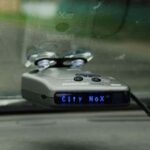One fine day the mail carrier drops the usual avalanche of catalogs, your utility bill – and a speeding ticket. How can this happen? To deter speeding, some cities now use cameras posted along roads to catch speeding drivers. Although the technology varies somewhat, generally the police park a car or van on a street. The vehicle is equipped with a radar activated camera. Any car exceeding the speed limit is detected by the radar, which triggers the camera to photograph the vehicle and its license plate. When the picture is developed, the license plate number is matched with motor vehicle records. A ticket and a copy of the photograph are then mailed to the vehicle owner at the address listed in the records.
Take heart. You have the right to contest a photo ticket, just as you do for any traffic ticket you receive from an officer.
Defenses you can use
If you decide to fight a speeding ticket based on “photo radar,” here are some defenses you can raise:
The vehicle identified in the photo isn’t yours. A dirty or obscured license plate could be mistakenly identified by law enforcement authorities.
The person driving your vehicle isn’t you. You are not liable for a speeding ticket just because your car was speeding. If you lent your car to friend or a family member, you should ask to have the ticket issued in your name dismissed.
The photo shows more than one vehicle. If your car was traveling in a closely spaced group of vehicles, the radar may have picked up the speed of another car. If so, ask to have the ticket dismissed.
There was no warning sign telling you that photo radar was in use. Some communities have laws requiring the police to post a warning sign some distance ahead of where the photo radar vehicle is stationed. But be sure to check local statutes before trying this defense, and be sure there really wasn’t any warning sign.
How to fight a ticket
Whether your ticket comes to you through the mail or whether it is issued to you by a law enforcement officer, you should…
Look at the ticket for the date by which you must pay your fine, appear in court, or request a court date. Don’t miss this deadline or you will limit your ability to contest the ticket at a later time.
Decide if you want to fight the ticket. You generally have a choice of pleading “not guilty” or “guilty with an explanation.” Pleading not guilty is a right guaranteed by the U.S. Constitution, and you can plead not guilty even if you know you actually did the deed that you’ve been accused of doing. Pleading guilty with an explanation may be worthwhile if you have a reasonable excuse for the violation.
File your plea, following the instructions on the ticket. Depending on where you live you may be able to do this…
In person by appearing in traffic court
By certified mail
By going to the local traffic court clerk and requesting a trial date.
When requesting a trial date, you may be required to post bail – usually equal to the amount of the fine. The bail amount will be returned to you when and if you win your case.
Being on the receiving end of a ticket of any kind is no fun, but the good news here is that by willing to assert your rights, you stand a good chance of winning your case. Taking the time to understand the law and to make the law work for you could help you to keep your driving record clean.



